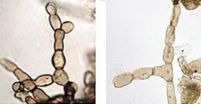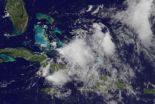(Press-News.org) BOZEMAN, Mont. – A Montana State University researcher who analyzed 100 years of data has found a significant link between extreme Montana weather and the ocean temperatures near Peru.
Montanans who want to know what to expect from the weather should look to the Pacific Ocean in the fall or maybe find a way to chat with some Peruvian fishermen, according to Joseph Caprio, professor emeritus in MSU's Department of Land Resources and Environmental Sciences and former Montana State Climatologist.
If the average surface temperature of the ocean near Peru is warmer than normal from November through March, fishing off the coast of Peru will be poor and Montana will experience El Nino from the following December through June, Caprio said. El Nino generally means Montana will be warm and dry.
If the average surface temperature is cooler than usual from November through March, fishing off the coast of Peru will be good and Montana will have a cool, wet spring, like the one experienced this year during La Nina, Caprio said. He added that weather in different areas of the country responds differently to El Nino or La Nina.
Caprio said Peruvian fishermen knew hundreds of years ago that ocean temperatures affected their livelihood. And scientists have long known that weather around the globe is linked to El Nino in different parts of the world. Meteorologists with the National Ocean and Atmospheric Administration make long-range forecasts by monitoring sea surface temperatures, atmospheric pressure, wind, air temperatures and cloudiness in various areas of the Pacific Ocean.
Caprio focused on the sea-surface temperatures in the area that's associated with Montana weather. That area is off the Peruvian coast and near the equator. It covers about 550 miles from north to south and 4,100 miles east to west.
Caprio specifically wanted to determine the effect of El Nino on extreme daily temperatures and precipitation in Montana.
"Since El Nino sea surface temperature anomalies tend to persist for many months and have predictable climatic associations, it is prudent to undertake research to understand how El Nino affects extremes of weather for individual locations in order to provide useful information for decision makers," Caprio said in a paper he published in the Intermountain Journal of Sciences.
Compared to normal years, El Nino years tend to have about 20 percent more days with extreme high daytime temperatures, 20 percent fewer days with extreme low nighttime temperatures and 20 percent fewer days with high precipitation amounts, Caprio said.
"An increase or decrease of extreme daily weather occurrences can impact natural resources and a wide range of human activities including agriculture, forestry, recreation, construction and other businesses," he added.
Luther Talbert, a professor in MSU's Department of Plant Sciences and Plant Pathology, reported the impact of a long-term trend toward warmer temperatures on hard red spring wheat in a paper he co-authored with other ag researchers at MSU. Published last year in the journal "Crop Science, " the paper showed that warmer temperatures are changing the environment for spring wheat production and will impact the goals of breeding programs.
That study looked at weather data and crop performance at six Agricultural Research Stations across Montana. From 1950 to 2007, the mean annual temperatures at five of the six sites increased significantly. March temperatures increased significantly at all sites, and planting dates became significantly earlier over time. This has led to earlier planting and a potentially longer growing season. Conversely, hotter temperatures in summer are causing earlier leaf senescence, thus shortening the time plants have to produce plump grain.
"The projection of increasing temperatures suggests the need for management and breeding strategies to ensure productivity of hard red spring wheat in the northern Great Plains," the paper said.
Caprio conducted his study by analyzing the relationship between two databases that each provided 100 years of information. One database gave the air temperature and precipitation as recorded every day from 1901 to 2000 on the MSU campus. The other database came from the Japanese Meteorological Agency and gave the monthly temperature of the ocean's surface between the latitudes of 40 degrees north and 40 degrees south and the longitudes of 150 degrees west and 90 degrees west. Those temperatures were taken in a variety of ways over the years – some by ship, others by buoys and satellites, Caprio said.
Caprio specifically compared MSU temperatures and precipitation between Dec. 3 and June 23 to average sea-surface temperatures between November and March. The study period included 50 normal years, 25 El Nino years and 25 La Nina years.
To analyze the data, Caprio used a statistical method he developed years ago called the "iterative chi-square method." It's different from most other techniques for studying climate impacts because it uses daily temperatures and precipitation, Caprio said. He added that he has proven the method in previous studies that considered the effect of daily temperatures and precipitation on apple, peach, grape, sweet cherry and apricot production in British Columbia, tree ring growth in Arizona, wheat production and winterkill in Montana, and climate variation in the Northwest.
Caprio said he continues to conduct such research because he has a curiosity to discover and wants to share his research methods with the scientific community, contribute to human knowledge, assist researchers in determining the effect of daily temperature and precipitation on agriculture natural resources and human activity, and emphasize the importance of long-term daily weather observations.
###
Co-authors on Caprio's latest study were Perry Miller and Jon Wraith, both in MSU's Department of Land Resources and Environmental Sciences. Wraith is now with the College of Life Sciences and Agriculture in Durham, N.H.
Montana State researcher discovers link between Montana weather, ocean near Peru
2011-08-06
ELSE PRESS RELEASES FROM THIS DATE:
UCLA study shows man-made fat may limit damage to heart attack victims
2011-08-06
FINDINGS:
A man-made fat called Intralipid, which is currently used as a component of intravenous nutrition and to treat rare overdoses of local anesthetics, may also offer protection for patients suffering from heart attacks.
Current treatment for a heart attack focuses on limiting the duration of the ischemic period, when blood flow to tissues is reduced, and on subsequently opening arteries to reestablish normal coronary blood flow. It is well known that injury to the heart muscle can occur after oxygen and nutrients in the blood flow back to deprived cells, a ...
What do Facebook and Rembrandt have in common? Everything
2011-08-06
Los Angeles, CA (August 5, 2011) Facebook and artists like Rembrandt have much in common, says the author of "Friending the Virgin: some thoughts on the pre-history of Facebook" in the open access journal SAGE Open.
The main commonality lies in the act of portraiture, which consists of more than just the realistic depiction of a subject, but also a number of rhetorical decisions closely intertwined with evolving ideas of identity and society, according to author Larry Friedlander. The article points out the complex negotiations that artists had to make when painting some ...
Attorney General: No Joint Growing Under Michigan Medical Marijuana Act
2011-08-06
In 2008, state voters adopted the Michigan Medical Marijuana Act ("MMMA"). While the MMMA did not repeal any existing Michigan laws regarding marijuana, it did carve out a specific exception to shield certain qualifying individuals from state-level criminal liability.
Until very recently, it was uncertain whether patients otherwise in compliance with MMMA could legally cooperate in marijuana plant cultivation. But, according to a new opinion from the Michigan Attorney General, only individual growing and use is contemplated by the MMMA.
Separate, Secure ...
Ocean probes to help refine climate change forecasting
2011-08-06
A USC researcher has opened a new window to understanding how the ocean impacts climate change.
Lisa Collins, environmental studies lecturer with the USC Dornsife College, spent four years collecting samples from floating sediment traps in the San Pedro Basin off the Los Angeles coast, giving scientists a peek at how much carbon is locked up in the ocean and where it comes from.
Collins' research suggests that the majority of particulate organic carbon (POC) falling to the basin floor is marine-derived, not the result of runoff from rainfall. This means that the ocean ...
Sea lampreys fear the smell of death
2011-08-06
EAST LANSING, Mich. — A repellant for sea lampreys could be the key to better controlling one of the most destructive invasive species in the Great Lakes, says a Michigan State University researcher.
Scientists have seen the effect alarm cues have on lampreys. When scents from dead sea lampreys are poured into a tank of live ones, the lampreys' efforts to escape are dramatic. In the past, these reactions were simply dismissed as novel. But Michael Wagner, MSU assistant professor of fisheries and wildlife, sees this reaction as a potential game changer.
"Sea lampreys ...
Did past climate change encourage tree-killing fungi?
2011-08-06
The demise of the world's forests some 250 million years ago likely was accelerated by aggressive tree-killing fungi triggered by global climate change, according to a new study by a University of California, Berkeley, scientist and her Dutch and British colleagues.
The researchers do not rule out the possibility that today's changing climate could cause a similar increase in pathogenic soil bacteria that could devastate forests already stressed by a warming climate and pollution.
The study, available online today (Aug. 5), will be published in the September 2011 print ...
Colorado Considers Increased Consequences for Hit-and-Run Drivers
2011-08-06
Hit-and-run accidents are appalling and shameful. It's bad enough to carelessly run into someone. But it's even worse to leave the scene without checking on the health and safety of the people in the other vehicle.
The Colorado legislature is looking to crack down on such cowardice. Colorado lawmakers are working with victims of hit-and-run car accidents to develop specific proposals for bills that would toughen the consequences for leaving the scene of an accident.
Consequences for Hit-and-Runs
Under present law, jail time is not mandatory for hit-and-run convictions. ...
Scientist urges government ruling on genetically engineered salmon
2011-08-06
WEST LAFAYETTE, Ind. -- A Purdue University scientist is urging federal officials to decide whether genetically engineered salmon would be allowed for U.S. consumption and arguing that not doing so may set back scientific efforts to increase food production.
William Muir, a professor of animal sciences, said that based on data made available by the U.S. Food and Drug Administration, AquAdvantage (AA) salmon poses little real risk to the environment or human health. AA salmon were given a gene from Chinook salmon that speeds growth and improves feed efficiency in farm-raised ...
GOES-13 Satellite watches Emily fizzle, morph and hope for a comeback
2011-08-06
VIDEO:
GOES-13 satellite imagery in 15 minute intervals from Aug. 3 at 15:15 UTC (11:15 a.m. EDT) to August 8 and shows Emily forming east of Hispaniola (bottom right) and moving...
Click here for more information.
A new animation from the GOES-13 satellite shows the creating and morphing of what was once Tropical Storm Emily into an elongated area of low pressure over the Caribbean Sea.
The Geostationary Operational Environmental Satellite called GOES-13 provides continuous ...
Obama Administration Ups Enforcement Against Alleged Health Care Fraud
2011-08-06
A number of large federal health care programs have been vulnerable to fraud for years. Although there is no way to accurately measure the exact financial impact of undetected fraud, officials estimate that abuses of health care initiatives cost billions of dollars every year.
In the current climate of slow economic growth and tight government budgets, officials are making concentrated efforts to trim waste. For the Obama administration, this means taking a hard line on healthcare fraud. New enforcement measures have resulted in a significant number of fines, penalties ...

